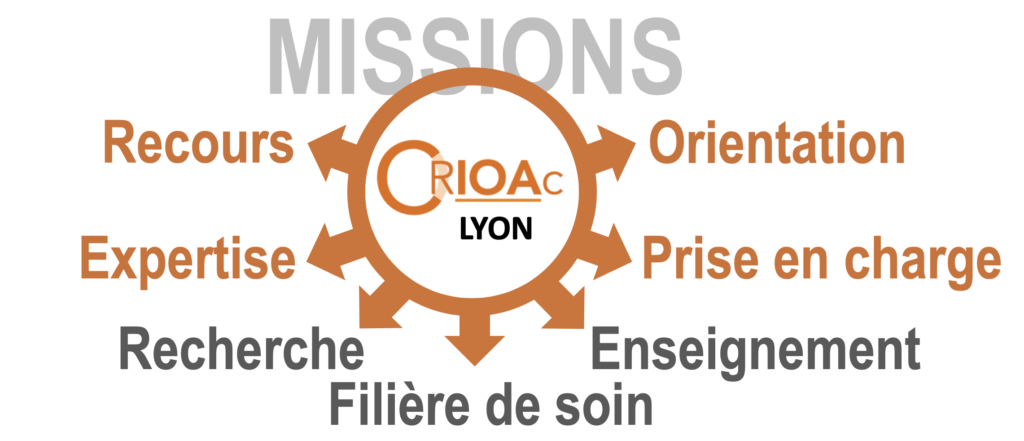Missions of CRIOAc Lyon and member centres
CRIOAc and associated centres have several missions :
Missions of referral, expertise, guidance and care
CRIOAc and member centres must respond to requests for advice (calls from general practitioners, specialists, surgeons) and be able to take care of both, simple and complex BJI. CRIOAc and member centres organise and centralise multidisciplinary team (MDT) meetings (a quorum where at least one orthopaedic surgeon, one infectious disease specialist and one microbiologist from CRIOAc or a member centre is present) by using the dedicated secure website www.si-ioa.sante.gouv.fr. The MDT meeting must evaluate factors of complexity of BJIs, and propose treatment recommendations and settings where care can be given (either at the centre requesting CRIOAc advice, or at CRIOAc, depending on the level of case complexity)
Furthermore, CRIOAc also ensures :
Maintaining the continuity of care
CRIOAc must strive to improve continuity of care, from the beginning to the end of treatment, especially by informing all the professionals taking care of the patient that CRIOAc exists, and by signing agreements with follow-up care and rehabilitation centres (also known as convalescent care homes).

Evaluation, research and teaching
CRIOAc must strive to evaluate practices and participate in the drafting of good practice guidelines at the regional and national level. They must not only promote clinical research (regional or national retrospective studies, and national prospective interventional studies), but also cross-sectional research, if possible, in cooperation with research teams linked to French public research organisations, such as INSERM. Last but not least, CRIOAc carries out the mission of teaching, on both the regional and national level. Since 2014, they offer graduate university lectures with a focus on BJI.
Since 2011, we have increased the number of MDT meetings and improved the continuity of care, especially at the end of treatment (cf. Convalescent care homes). We have developed our clinical, cross-sectional and fundamental research projects around the theme of BJI (cf. The research teams working with CRIOAc) and we actively participate in regional and national BJI education.


